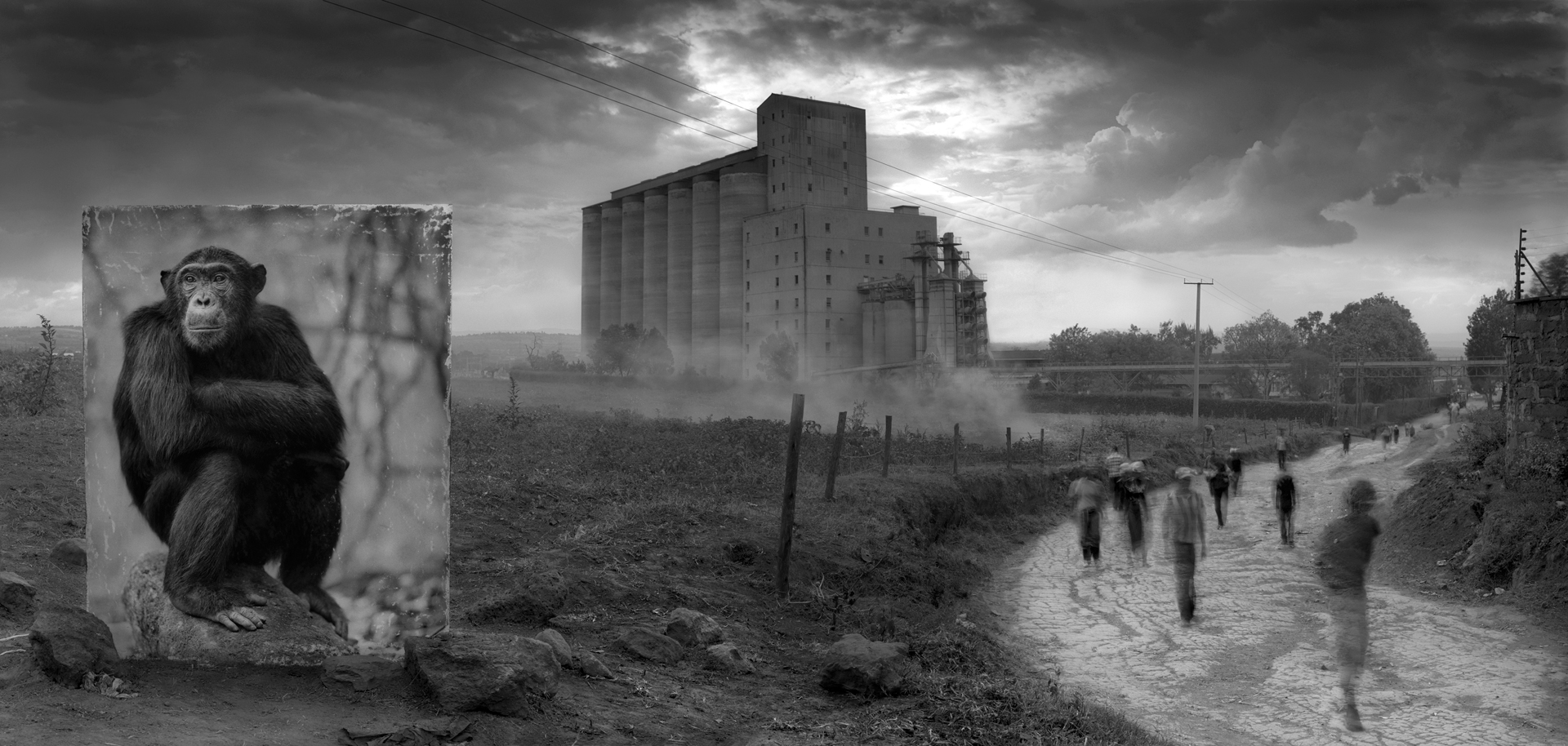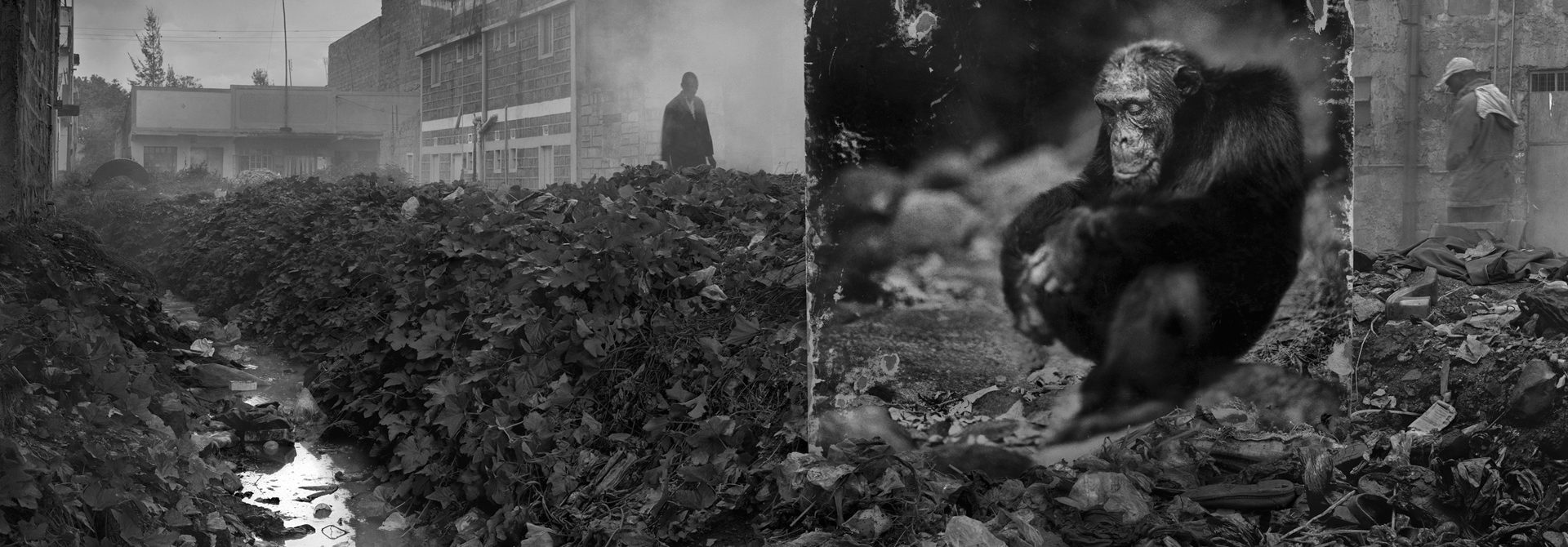
Wild Nature Photographer Nick Brandt: “I Used to Photograph Animals in the Same Way as Human Beings”

British photographer. Studied painting and cinematography at the Saint Martin’s School of Art in London. In the early 1990s, shot music videos for Michael Jackson and Moby, later started working on various photography series about wildlife. His most famous projects include On This Earth, Across the Ravaged Land, and A Shadow Falls. In 2014, the photographer started working on his project called Inherit the Dust.
— You said in some interviews that shooting a music video for Michael Jackson’s Earth Song in Tanzania changed your life. What actually happened to you then?
— It was a long time ago, twenty-two years ago. As it seems to me, it was another life. For years I was very frustrated that as a director I couldn’t express my feelings about the natural world. But in Tanzania I realized that as a photographer I can do that in my own way, on my own terms, in my own languages.
— In your photos animals are quite calm, impassive, and indifferent. Why do you refuse the drama that photographers of wild nature like so much?
— I used to photograph animals in the same way that I would photograph a human being. For example, if you take a portrait of a basketball player, what are you doing? Ask him to run around on the court, or throw the ball, or ask him to take a chair, or stand calm for this portrait? If you’re trying to capture personality you want them to be in a state of calm. That’s why the animals in my photos are so impassive.
— As I know, you didn’t use a telephoto lens and took photos from a rather close distance. What did that bring you?
— It allowed for a good portrait, to see personality.
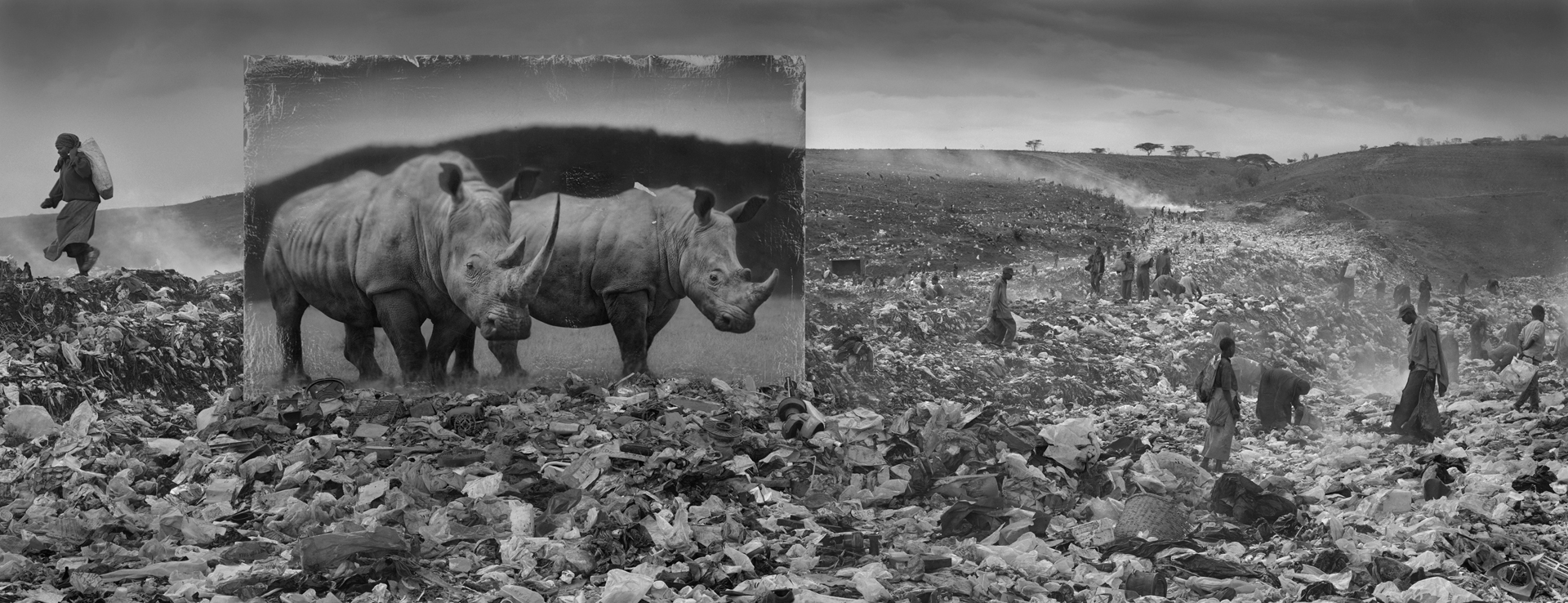
Nick Brandt. Wasteland with Rhinos, 2015
— You shot your projects in Eastern Africa. Why is this region is so attractive for you?
— If you go to South America, you can shoot one rare animal, if you go to another place, you can shoot another rare animal. Eastern Africa – one of the few places in the world where the animal world is represented in all its diversity. And what was important that Tanzania had emotional impact on me during shooting of the music video and made me want to return to this place.
— In what kind of places did you shoot Inherit the Dust?
— I was looking for the places where wild animals used to inhabit a short time ago and where you can imagine their former presence. The point is that the animal appears like a ghost in real landscape, in daylight. In almost all of the photographs I tried to include one remaining fragment of wild landscape. The exception is the photograph titled Underpass with Elephants. That was so powerful a visual location that I broke my rule. I thought that I can take a picture without wild landscape in the background.
— Did you shoot this project in Africa?
— It’s kind of an interesting idea to apply this concept to anywhere in the world. But I was looking for the place where all these animals from the banners still do exist. That an urgency to do that work in Africa because all those animals were shot there. If have done this concept in Russia, for example, first of all I’d find and shoot the animals which are now almost extinct. It would have been difficult.
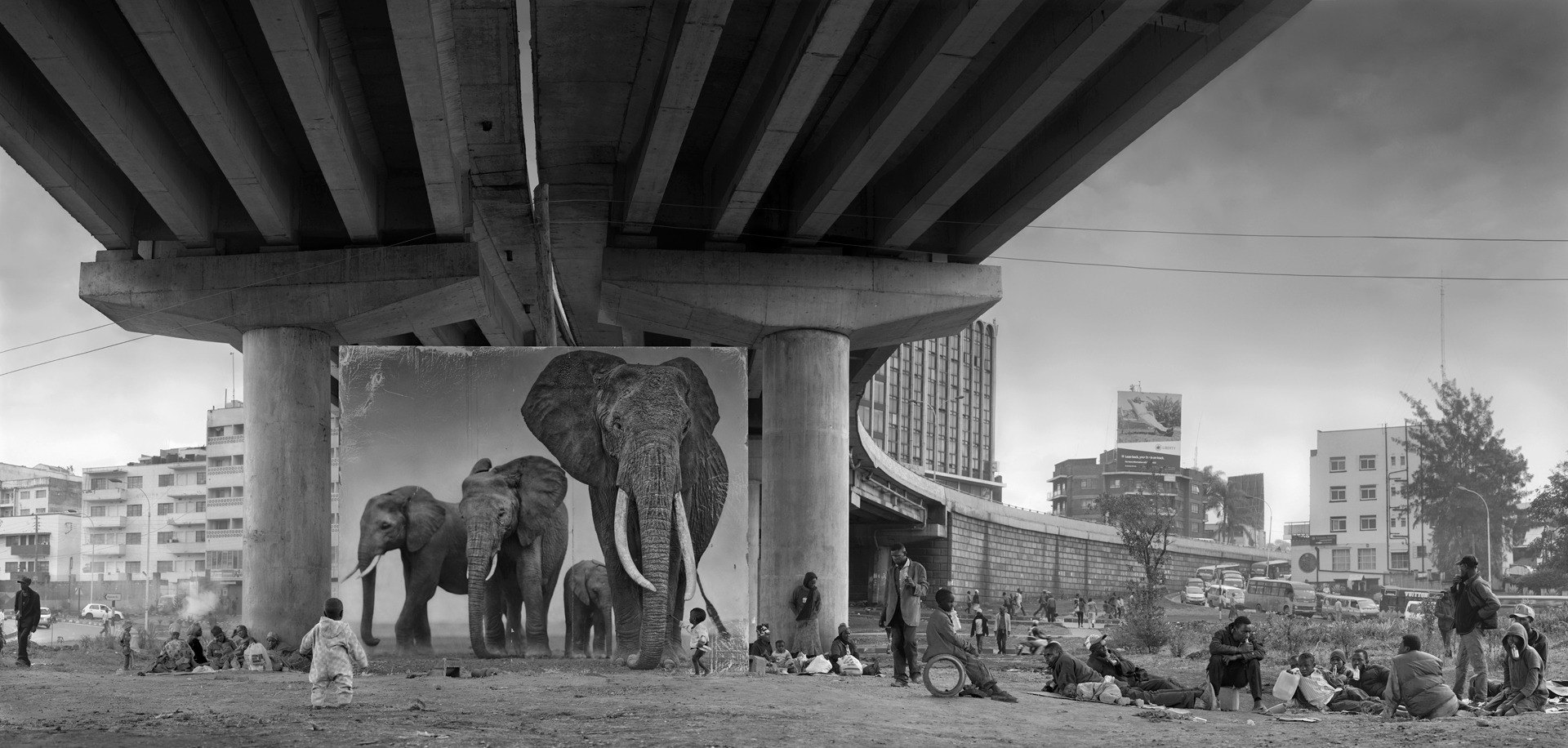
Nick Brandt. Underpass with Elephants and Glue-Sniffing Children, 2015
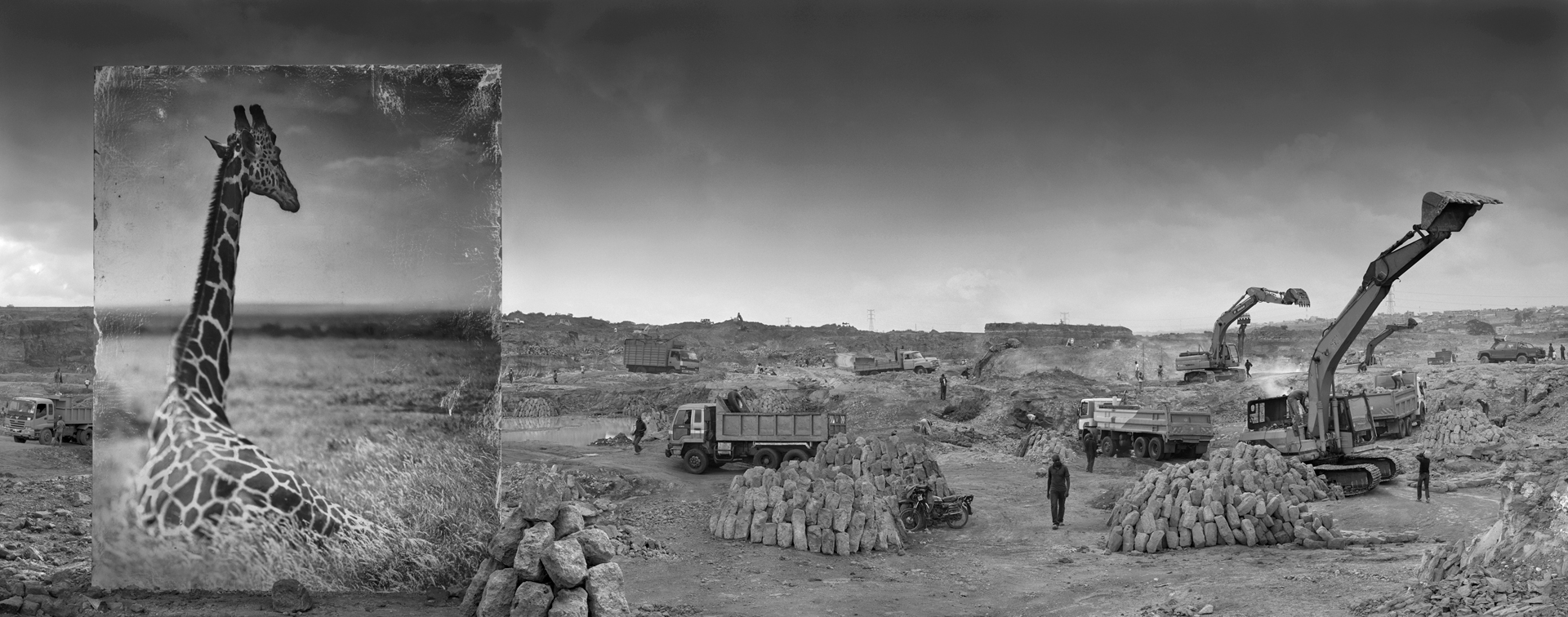
Nick Brandt. Quarry with Giraffe, 2014
— Do you use Photoshop or was it a real lifesize banner?
— This question drives me crazy. People get used to the fact that all things were created in Photoshop and they can’t believe it’s staged. Yesterday, a journalist from TV was surprised that I did the project without Photoshop. If you just created a story with Photoshop this is no discovery, no adventure. It cost me so much money to build life-size panels, but it was worth every cent. Because the result was superior and unexpected things were happening by putting out lifesize panels. This is what made my photographs more interesting.
— Which things, for instance?
— There were only homeless people with their children near the location where I worked. These homeless kids hesitated to come close to the elephant panel but gradually over the days were getting closer and closer to it. It reached a point when it felt like a mother-elephant was looking down on playing kids. The scene impressed me. Come to think of it, the elephant and the kids are both homeless. One little kid decided to carefully touch the mother-elephant’s trunk and I took a photograph. But as you can see, people have no reaction to the depiction of animals on panels, this ghost from the past didn’t disturb them. They tried to just get through a day making a living. They just thought that one crazy white guy was coming along doing stuff. The kids were the most interested.
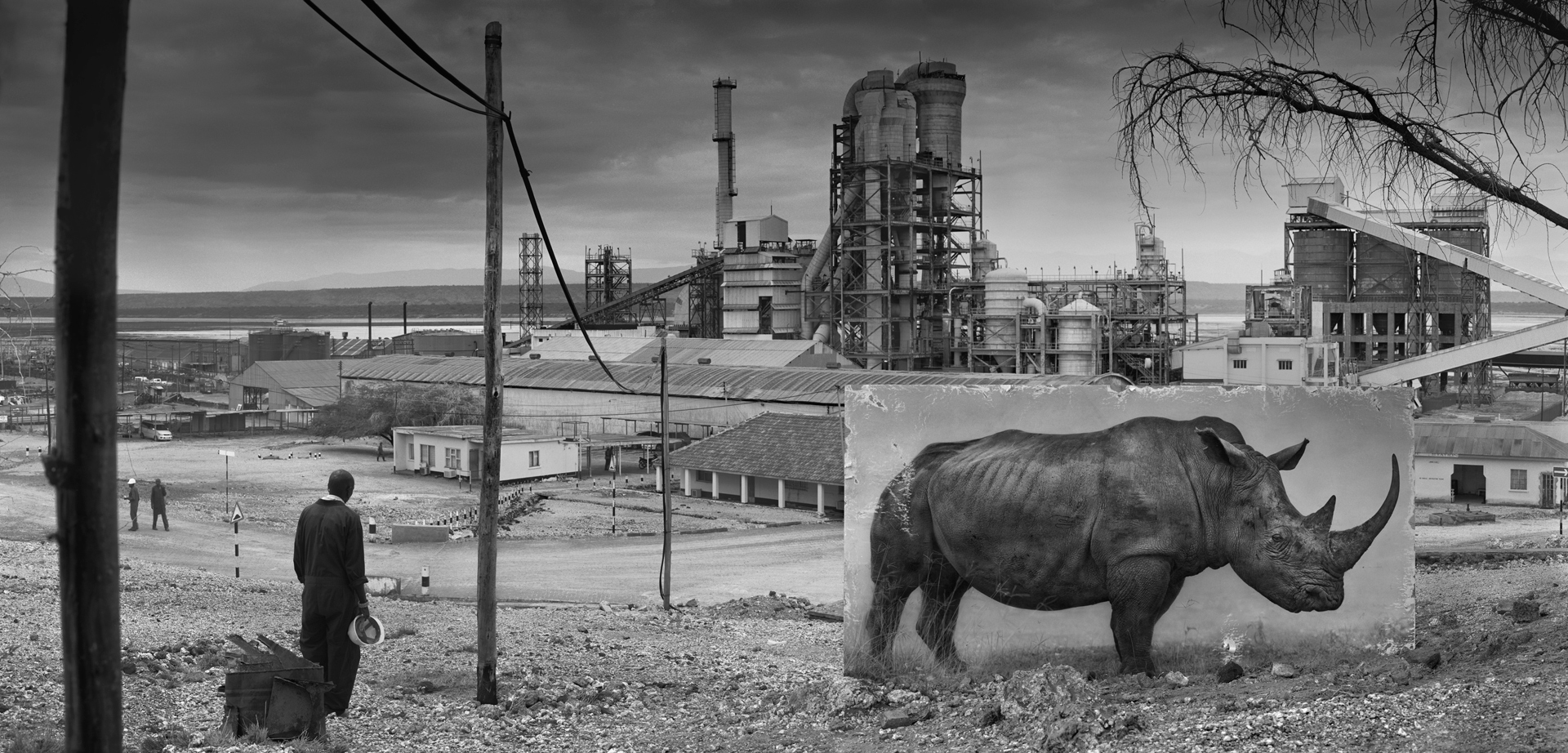
Nick Brandt. Factory with Rhino, 2014
— The photos that you used in this project were never published before. What was the reason for that?
— For one reason or another they were never released. For example, if we take the photo with the chimpanzee, I didn’t think it was good enough. And when I took it and placed in an alleyway that was cluttered up with waste, it created the impression that the chimpanzee had melancholia, as if it’s a reaction on a world around it. Maybe it was not the best photo, but it matched the landscape so well that I took a photograph. I wish I had more photographs to choose from but it was all I could find from my records.
— Did you use film for this project?
— Yes, I shot it on film. I used multiple negatives 6х9 which were stitched together.
— Did you ever work with color?
— No, but I am going to do it in Kenya soon. And in my new project the photos will be in color and digital. And the style will be completely different. It is terrifying to me.
